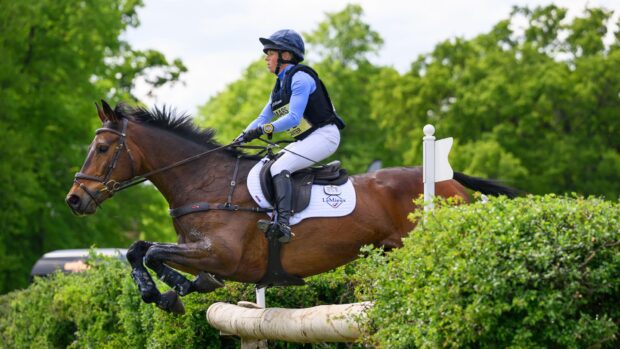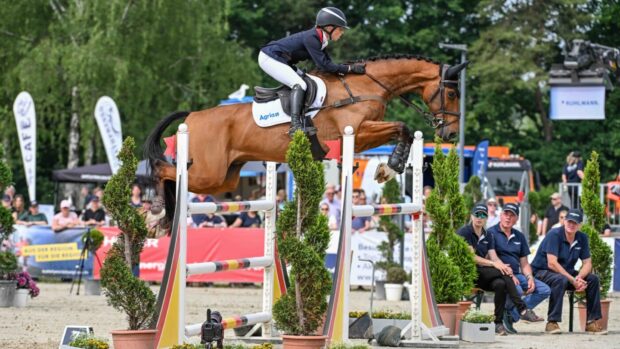At a recent masterclass, sponsored by Dodson & Horrell (21 January), top event riders Tom McEwen (T) and Richard Jones (R, pictured top) shared some great tips on how to introduce a young or inexperienced horse to narrow cross-country fences.
Richard was riding a seven-year-old gelding, who competed in his first two BE90s at the end of last season, while Tom was riding a seven-year-old gelding, who competed to British Eventing (BE) novice level in his first season of eventing last year.
Here’s some top tips from the pair on how to best introduce your horse to narrow cross-country fences…
1. R — To start with, it’s important to mention that you should ride to your horse’s needs in each training session, rather than what you think you should have to achieve. For example, this horse is seven, but he’s still very green, so I need to give him a chance — it’s no good thinking, ‘he’s seven so he needs to be doing X, Y and Z’. You never want to put your horse in a situation where he is struggling — you have to develop a relationship with your horse so that they trust everything you ask them to do.
2. T — I often use ‘tramline’ poles before and after showjumps with young horses to help improve straightness.
3. R — Only introduce a horse to cross-country fences when their canter is established, they are rideable, on your aids, straight and capable of jumping a course of showjumps at around 1m.

Tom warming up
4. T — I use fillers in the arena at home to help train my young horses jump narrow fences. I start with two fillers pushed together, then slowly reduce the width, eventually ending up with just one narrow filler, but always ensure you maintain straightness.
5. R — I might start introducing a young horse to narrow fences by first jumping a showjump with shorter poles in the warm-up when cross-country schooling.
6. R — No matter the level of horse, whether they are just starting out in their eventing career, or have jumped around Burghley and Badminton, I always jump narrow fences with wings or flags — this is more fair on the horse and it also trains them to look to jump between a set of flags.
7. T — I also make sure that everything I do in my training is ensuring that all the horse learns to do is jump through a set of flags.
8. R — If your horse is running out six times before they jump a narrow fence, all you’re actually doing is teaching them to run out.
9. R — I start by putting guide rails on both sides of the narrow fence to give the horse a chance of understanding the question you are asking him. Once your horse is jumping that confidently, I will put the guide rails on the floor, but still on both sides of the fence — this is all about building confidence rather then trying to catch them out.
10. T — I ride with a positive canter and am confident around the corners on the approach to the fence, while maintaining balance — achieving this will help with reaching the optimum time when you go competing as you are training rideability into your horse.

Richard showing his horse the fence
11. R — If you want to show your horse the narrow fence before jumping it, that’s fine, as long as they know you’re not asking them to jump it from a standstill.
Article continues below…
You might also be interested in:

Jumping a horse away from home for the first time: 13 top tips from Michael and Jack Whitaker
Here’s some top tips from the pair on how to introduce a horse to a new environment and build confidence…
12. R — When approaching the fence, your eyes should be glued to it early — this will help give your horse confidence through a positive ride.
13. R — It is worth spending time with your horse to get the best possible end result — repeat the exercise until your horse gets the idea.
14. T — When your horse is more established, play around with the narrow fence, approaching and landing and turning away from it — this will teach him to focus on the narrow object. If they go disunited, or get a little bit tired, keep playing around — your horse has to learn to just get on with the job in hand.
For all the latest news analysis, competition reports, interviews, features and much more, don’t miss Horse & Hound magazine, on sale every Thursday.




